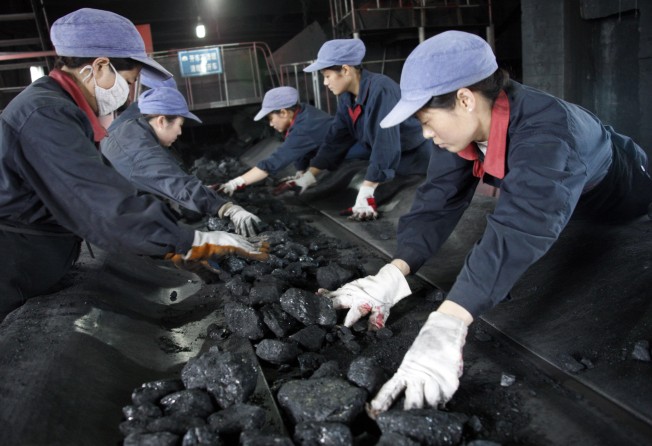
China, US to cooperate in developing ‘clean coal’ technologies to help combat climate change

Officials from China and the United States have taken a major step towards an agreement to advance “clean coal” technologies that claim to reduce the fuel’s contribution to climate change — and could offer a potential lifeline for an industry that has seen its fortunes fade.
The agreement between the US Department of Energy and China’s National Energy Administration allows the two nations to share their results as they refine technologies to capture the greenhouse gases produced from burning coal, said Christopher Smith, the energy department’s assistant secretary for fossil energy.
Terms of the deal were finalised late on Tuesday. Officials said it would be signed at a later date.
Smith spoke after he and other senior officials from President Barack Obama’s administration met with representatives of China’s National Energy Administration during an industry forum in Billings, Montana.
The discussions took place near one of the largest coal reserves in the world, the Powder River Basin of Montana and Wyoming, where massive strip mines produce roughly 40 per cent of the coal burned in the US.
But clean-coal technologies are expensive and efforts to develop them for commercial use have struggled to gain traction in the US.
Some critics describe clean coal as an impossibility and say money spent on it should instead go toward renewable energy.
China leads the world in coal use. It produces and consumes about 4 billion tonnes annually, four times as much as the US.
Shi Yubo, vice administrator of China’s energy agency, told delegates to the forum that coal would continue to play a role in China’s developing economy. “But we need to pay special attention to developing clean coal technology,” he said.
Shi said China was seeking to develop more demonstration projects that capture carbon to prevent it from escaping into the atmosphere.
He acknowledged that efforts to put the greenhouse gas to beneficial use were still far behind.

Meanwhile, the US coal industry has suffered a beating in recent months, with major mining companies going bankrupt.
The government’s interior department is proposing rises in coal royalties and possibly in lease payments for publicly-owned reserves of the fuel in areas such as the Powder River Basin.
Cheap natural gas is also squeezing out demand for coal and President Obama has made reductions in carbon dioxide emissions from coal-fired power plants a key component of his climate policy.
“You’ve got to develop wind and solar and develop nuclear, but you also have to deal with the challenge of reducing the greenhouse gas impacts of coal-fired power plants,” Smith said. “It’s positive if those projects [to capture carbon] get built here. It’s positive if those get built in China and India and Europe and around the world.”
Almost one-third of energy-related carbon dioxide emissions in the US come from burning coal, equivalent to 1.6 billion tonnes of the gas last year.
By comparison, two clean coal projects that Smith described as closest to completion, the Petro Nova project in Texas and the Kemper project in Mississippi, would capture less than 5 million tonnes of carbon dioxide annually.
He said the interactions between his agency and its Chinese counterpart created opportunities for companies from both countries to come together on ways to meet ambitious plans to cut emissions.